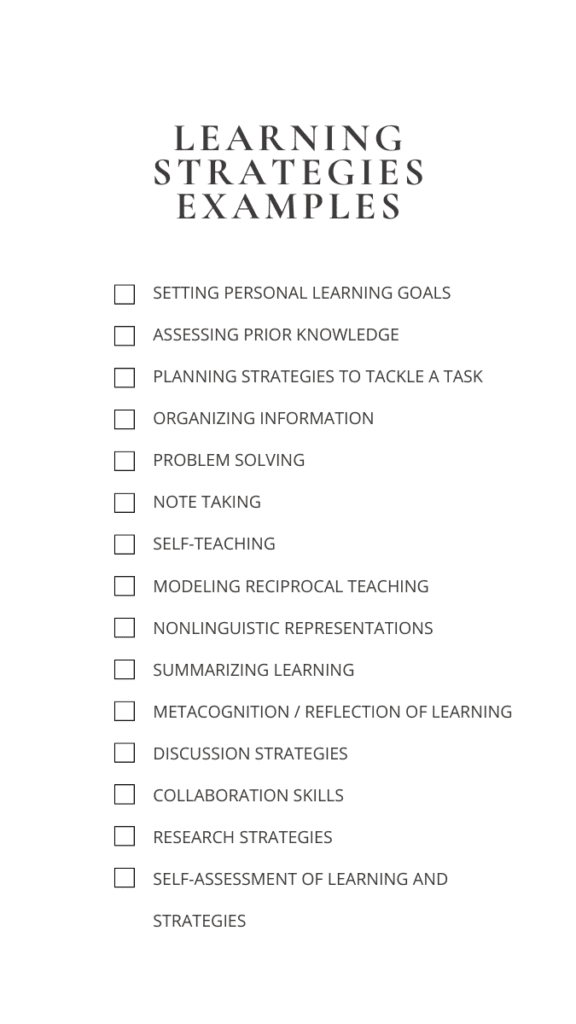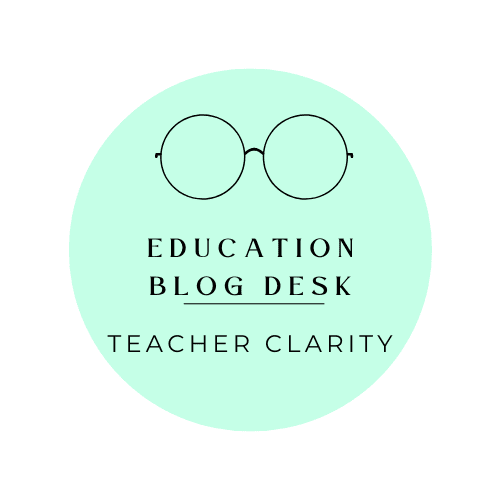Learner Strategies Defined
According to O’Connell and Vandas, learner strategies are the plans or actions that help you learn faster and can be used in other learning situations.
How do teachers help their students come up with ways to learn? This post will show you how.
Why Is It Important?
For kids, the most important part of learning is to teach them how to learn better and find the steps that helped them succeed. Students can learn the material and get ideas for how to use Learner Strategies in the future.
To achieve True North, the goal is to give students the tools they need to build a personal toolbox of learning strategies that they can use in all kinds of learning situations throughout their lives. When students get stuck, they will look at their toolbox of tactics to figure out what to do. This goal can help students set goals and own their learning.
O’Connell and Vandas tell teachers that when they use Learner Strategies, they should have two goals:
- Students learn the ideas and skills they need to fully understand the material.
- Students learn skills that will help them reach important goals for the rest of their lives.
We need to get kids ready to learn things that go far beyond what they learn in school, so they can face challenges and come up with new ideas they haven’t even thought of yet. How can teachers get their kids ready to learn? O’Connell and Vandas say both teachers and students should plan ahead.
Students who work hard to learn and quickly pick things up have various strategies that they can use in different scenarios. Take a moment to think about your strong readers. They are probably unknowingly metacognitive, making mental notes and asking questions as they go. They have learned skills and methods that they now use without thinking about it. Because of this, students have learned a wide range of reading skills that have become their own toolbox.
O’Connell and Vandas talk about research by Bandura (1977, 1997) that shows how capable students feel as self-regulated learners is based on what they think about their own self-efficacy. They also learn more and feel better about themselves when they have high self-efficacy and good self-regulation skills. Below are definitions provided by Bandura:
- Perceived self-efficacy is how confident people are in their ability to achieve their goals.
- Self-regulation means controlling your own drive, thoughts, feelings, and behavior habits.
When students have a fixed mindset and don’t think they are good learners, they often lack confidence and learning techniques. Many times, these kids have trouble explaining how they think and process information. Motivation is often a problem when teaching these kinds of kids. People often blame the teacher, the student, and sometimes the parents when they think lack of drive is to blame for poor performance.
O’Connell and Vandas remind educators that “Our job is to change our practices, and as a result to alter students’ mindsets and equip them with strategies that will boost their learning, as well as the opportunities for their future.”
Learner Strategies
What types of strategies will empower students? O’Connell and Vandas have listed some examples.

You may have noticed that some examples are similar to methods that good teachers use in the classroom. But O’Connell and Vandas’ theory says some students can understand how to use and apply these strategies on their own, while many students can’t get the idea that they could use a teacher-owned method for their own learning. O’Connell and Vandas’ goals are to teach students more about the methods, give them the tools to be more involved in their own learning, and get them ready for future projects. This transfer doesn’t happen for all kids, though, unless we make it part of the way they learn.
Transfer of Learner Strategies
O’Connell and Vandas emphasize that it is critical to discuss the way we transfer the strategies from teacher-owned to student-owned.
What does transfer mean? Transfer means students take the ways of learning shown in the classroom and use them in their own learning. It’s important to let kids know, though, that not all strategies are meant to work for them. Some are, though.
Think of a method like working with others to learn. Rally Robin from Kagan’s book Cooperative Learning (1994) is one structure that the teacher might use. In this structure, students work in pairs and take turns helping each other with each step of a problem. Students will learn useful skills for talking to each other and having discussions from the experience, but they probably won’t use a Rallyrobin format when they talk with friends or in a study group. Even so, the experience is still helpful for meeting the Learning Intention and learning how to work with other students. This is known as a Partial Transfer.
On the other hand, students can fully transfer when they can fully understand and use a plan in the future. One example of this type of plan is taking notes. They might show you how to use an idea map, Cornell notes, or key word notes. For each type of note-taking, students can fully accept the different formats as Learner Strategies that they can use in the future.
Transfer of strategies is seen by O’Connell and Vandas as a multistep process that fits perfectly with the learning process. Before starting to teach, O’Connell and Vandas suggest teachers think about these three things when moving methods from teacher-owned to student-owned:
- Review the Learning Intention and performance on the pre-assessment.
- What strategies would best support students in reaching the learning intention(s)?
- What evidence from pre-assessment can inform type of learner strategies that students could use to reach learning intention(s)?
- Reflect on the types of strategies students already possess and use regularly.
- What learner strategies have I witnessed students use in the past?
- When do I see my students working independently? What strategies do they employ during these times?
- Do I have any students who may teach Learner Strategies to others? (Aligns to what is my contribution?)
- Determine the types of learner strategies to be shared with students during each phase of the Teaching and Learning process (before, during, after).
- Which strategies might best support my students before we begin new learning, or might be at the surface level of the learning progression? (aligns to where am I going?)
- Which strategies might best support my students before we begin new learning, or might be at the surface level of the learning progression? (aligns to How am I doing?)
- Which strategies might best support my students before we begin new learning, or might be at the surface level of the learning progression? (aligns to where am I going?)
Learner Strategies Align to Learning Process

O’Connell and Vandas grouped Learner Strategies as they align to the time frames of the learning process. O’Connell and Vandas note that different strategies can be used more than once, and when it is the best time to use a strategy during a particular time frame or phase.
Six Actions to Transfer Teacher Owned to Learner Owned Strategies

O’Connell and Vandas provide a definition of each action a teacher might consider to transfer strategies to students. See Chart Above.
O’Connell and Vandas provide an example of the six actions used to support students in making transfer from a teacher owned strategy to a student owned strategy. In a unit of study, a teacher felt it necessary for students to take notes from several texts. Students must accurately record meaningful information from each text, organize, process, and remember specific information about a topic. In doing so, the teacher felt it necessary to share several forms of note taking with his students, and designed the following instructional sequence:
Modeling – On three separate days, the teacher selected one note-taking method to share with the students. He modeled Cornell notes, a concept map, and an outline for his students each day. After the modeling, students were asked to try each form of note-taking, using different texts from the same genre.
MetaCognition – After students tried each form of note taking, he again asked them to think about how that form of note taking helped them organize and process information about the topic. Students shared their ideas in small groups, and then as a class.
Choice – Once students felt comfortable with each type of note taking, the teacher presented them with a new text to read and digest. He asked each student to skim the text and determine which type of note-taking he or she would personally find most effective to use.
Monitoring and Reflection + Revision of Strategy – As each student worked through the text, taking notes in his or her chosen format, the teacher stopped the class to ask how the format for note-taking was working. Students were allowed to modify and change their format if they found it difficult to use the format they initially selected.
Independent Use – Once students had completed the task, he asked them to discuss which type of note-taking worked best, and why. He then asked students to develop a list of criteria for which types of text and purpose best fit each type of note-taking.
Monitoring and Reflection + Revision of Strategy + Independent Use – The teacher also recorded observations on the type of note-taking formats the students used independently, and with which types of text. He shared this information with the students to stimulate a class discussion on choice and individual preferences, as well as how to best modify strategies to optimize effectiveness.
This post is part of the Building Student Ownership of Learning under Learning Journey Signpost
